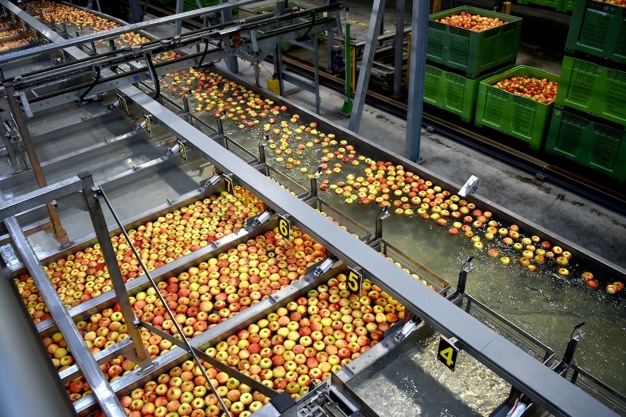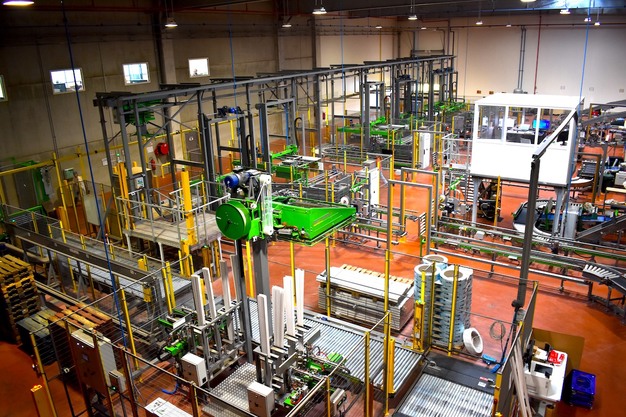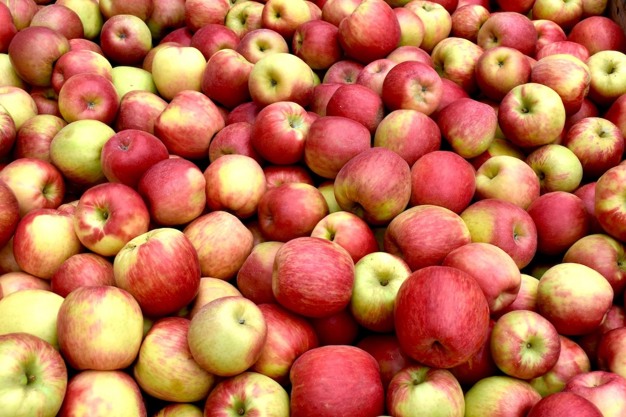Last Friday, Pomanjou, which is part of the Innatis group, inaugurated its brand new fruit processing plant in Verrières-en-Anjou. This brand new site combines modernity, efficiency and new technologies. An investment of 30 million euros [33.2 million USD] was required to equip a single 14,300 m² station that now brings together storage, grading, packaging and dispatch activities. "Our apples used to pass through two sites that complemented each other in terms of activities. By concentrating all our activities on a single site, we can now save a considerable amount of time and logistical effort," explains Alice Gianola, communications and marketing manager of the group.

Click here to view the photo report
This long-awaited new fruit station has 2,500 m² of photovoltaic panels covering the 3.9 ha site and powering an innovative energy system that recovers the energy used to heat the grading and packaging hall. The station's two corridors are made up of 20 controlled-atmosphere cold rooms, each with the capacity to hold 240 tons of fruit in columns up to 12 pallets high. There are also 4 normal cold rooms, each with a capacity of over 1000 tons. At the end of this huge corridor, which serves the cold rooms on either side, is the packaging area. Here again, the modernity of the site is impressive. With the exception of two people supervising the machines and another setting up the computer, all operations are automated. The optical sorting system allows for up to 40 specifications to be configured. Each apple is photographed from every angle, taking 30 shots before being fed into one of the 40 calibration channels. Once the channel is full, it is emptied and automatically cleaned by a robot to keep the water clean. As soon as the crates are filled, they are automatically labeled to ensure optimum traceability. In total, 18 to 20 tons/hour of apples are sorted and graded. This is followed by one of the only human interventions in the chain: retrieving the crates to take them to cold storage.

Click here to view the photo report
Once the optical sorting and grading operations have been completed, the apples are packed on 7 packing lines. Each line can load 8 pallet boxes. The 5 to 10% of the apples that are rejected from the packaging circuit are once again automatically either rejected to a pallet of rejects that are weighed in time, or taken to the skip for rotten apples, thanks to a network of underground pipes, where the operation previously required human intervention. It is a way of making savings across the board, and not "incurring costs for fruit that does not make any money." The fruit leaving the packaging lines is then dried and brushed using a brush and ventilation system. They are then packed dry, shiny and scrubbed without the use of any chemicals. Several packaging machines are then used to meet the needs of each client. The palletizing system has been designed so that there is never a break in the load, which again saves considerable time.

Click here to view the photo report
In addition to the tour of the station, guests were able to visit the orchards, where different growing techniques and varieties were presented, including the famous HoneyCrunch and Zingy. The visits ended with an evening at the station.
For more information:
Alice Gianola
Innatis
alice.gianola@innatis.com
